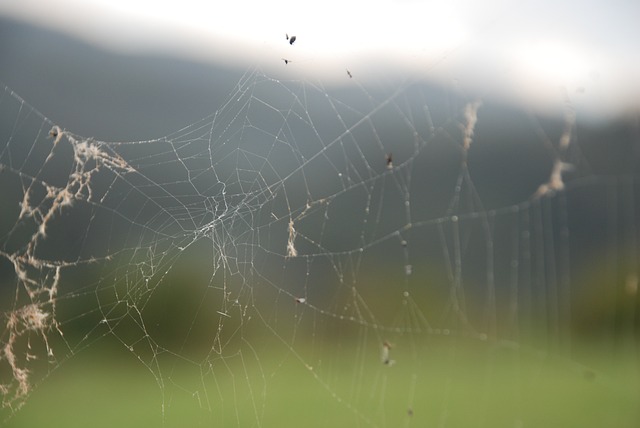Clover mites, despite their tiny size, can cause significant lawn damage and allergic reactions in sensitive individuals. This text offers eco-friendly clover mite solutions focusing on non-toxic methods to disrupt their life cycle. It recommends maintaining healthy lawns, introducing beneficial insects, using essential oils like neem, peppermint, and citronella in garden sprays, implementing physical barriers, and promoting biodiversity through native plants for effective control without harming the environment or beneficial insects.
Clover mites can turn your outdoor spaces into an uncomfortable haven, but fear not! This article explores natural remedies and sustainable practices to manage these tiny invaders. We delve into understanding their behavior, from identifying their impact on grass and plants to learning how they breed and thrive. By embracing eco-friendly prevention strategies and natural treatments, you’ll discover effective, long-term solutions to keep your outdoor areas mite-free.
Understanding Clover Mites: Their Behavior and Impact
Clover mites are tiny insects that, despite their size, can cause significant issues in outdoor spaces. These pests primarily feed on grasses and other plants, often targeting lawns and gardens. Understanding their behavior is crucial when devising eco-friendly clover mite solutions. They are most active during the spring and fall, when they emerge from their winter dormancy, and their populations can quickly escalate if left unchecked.
The impact of clover mites extends beyond mere plant damage. Their presence can lead to unsightly patches in lawns, affecting both aesthetics and property values. Moreover, some people may experience allergic reactions to the mites’ debris, making it essential to employ natural, non-toxic methods for control. Eco-friendly solutions focus on disrupting their life cycle without harming beneficial insects or the environment, offering a sustainable approach to managing these pesky critters.
Eco-Friendly Prevention Strategies for Effective Control
To prevent and manage clover mites in an eco-friendly manner, consider implementing natural and sustainable strategies. One effective approach is to maintain a healthy lawn by promoting dense grass growth. Clover mites are often attracted to thin or stressed lawns, so ensuring robust vegetation can deter them. Regular mowing and proper watering techniques play a crucial role in achieving this. Additionally, introducing beneficial insects like ladybugs and lacewings can help control mite populations naturally. These insects feed on clover mites, acting as biological controls.
Another eco-friendly solution is to utilize plant essential oils that are known to repel mites. Oils such as neem, peppermint, and citronella can be applied to infested areas or mixed into garden sprays. This method offers a safe and non-toxic alternative to chemical pesticides while still providing effective mite control. Furthermore, physical barriers like netting or row covers can protect plants from mite infestation, especially during peak activity periods.
Natural Remedies and Treatments for Infestations
Natural Remedies and Treatments for Infestations
When faced with a clover mite infestation, many homeowners seek eco-friendly clover mites solutions to manage and eliminate these tiny pests without resorting to harsh chemicals. Fortunately, there are several natural remedies that have proven effective in controlling clover mite populations. One of the most popular methods involves the use of neem oil, a natural insecticidal compound derived from the neem tree. When applied topically, neem oil disrupts the growth and reproduction cycles of mites, offering a safe and sustainable solution for outdoor spaces.
Another powerful ally in the battle against clover mites is beneficial insects, such as ladybugs and lacewings. These natural predators feed on clover mites and can significantly reduce their numbers over time. Encouraging these beneficial insects into your garden through the planting of certain flowers or the use of insectary patches is an effective, long-term strategy for managing clover mite infestations. Additionally, maintaining a healthy lawn and avoiding excessive watering can help deter clover mites, as they thrive in warm, moist conditions.
Long-Term Management: Sustainable Practices for Outdoor Spaces
Clover mites can be a persistent problem, but adopting long-term, sustainable practices offers eco-friendly clover mite solutions that benefit both your outdoor space and the environment. Instead of relying on chemical treatments, consider implementing natural methods to manage their population. One effective approach is promoting biodiversity by planting native flowers and grasses that naturally attract beneficial insects like ladybugs and lacewings, which feed on clover mites. Additionally, maintaining healthy soil through proper aeration, fertilization, and moisture control creates an inhospitable environment for these pests.
Regular mowing and trimming helps remove eggs and nymphs from plant surfaces, while physical barriers like netting or row covers can protect vulnerable plants during peak mite activity. Encourage natural predators by providing habitats like birdhouses and bat boxes nearby. Integrating these sustainable practices into your outdoor space not only reduces clover mite populations but also fosters a balanced ecosystem that supports overall ecological health.
In conclusion, managing clover mites in outdoor spaces can be achieved through a combination of understanding their behavior, implementing eco-friendly prevention strategies, and adopting natural remedies. By combining these approaches, homeowners and landscapers can effectively control these pests while minimizing the use of chemical treatments. Long-term sustainable practices ensure a healthier environment and beautifully maintained outdoor spaces. Embracing eco-friendly clover mites solutions is not only beneficial for your garden but also for the overall ecosystem.
